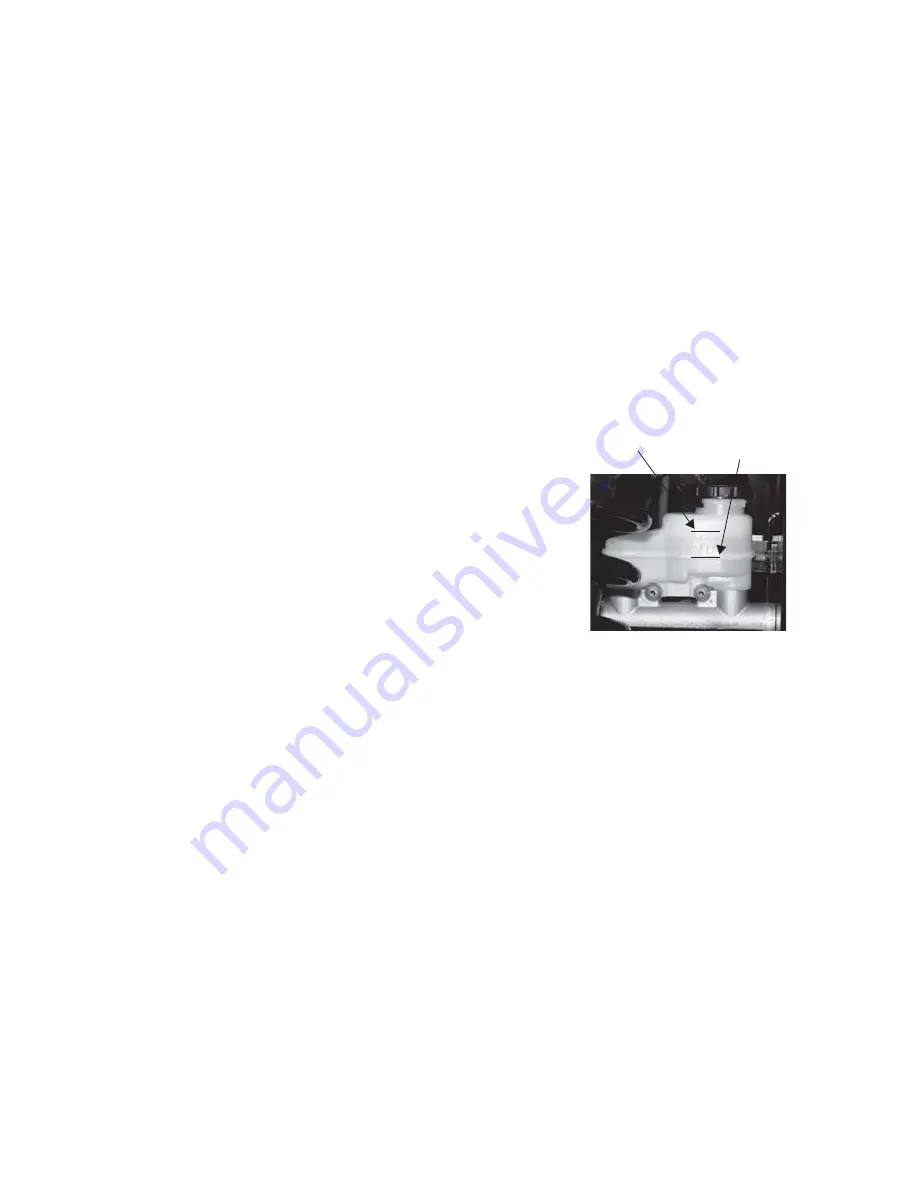
86
MAINTENANCE
Brakes
WARNING
Do not perform maintenance immediately after the vehicle has been operated, as the brake system
may become very hot. Serious burns could result from contact with hot brake components. Allow
components to cool before proceeding.
• Wear eye protection and gloves.
Brake Fluid
Inspect the brake system routinely. Inspect the level of the brake fluid before each operation.
WARNING!
After opening a bottle of brake fluid, always discard any unused portion. Never store or
use a partial bottle. Brake fluid is hygroscopic, meaning it rapidly absorbs moisture from the air. The
moisture causes the boiling temperature of the brake fluid to drop, which can lead to early brake fade
and the possibility of accident or severe injury.
Change the brake fluid every two years and any time the fluid becomes contaminated, the
fluid level is below the minimum, or if the type and brand of the fluid in the reservoir are
unknown.
1. Position the vehicle on a level surface.
2. Place the transmission in PARK.
3. View the brake fluid level at the reservoir in the driver’s
side wheel well.
4. The level should be between the upper (MAX) and
lower (MIN) level lines.
5. If the fluid level is lower than the upper level line, add
brake fluid to the upper (MAX) line.
6. Apply the brake forcefully for a few seconds and check
for fluid leakage around the fittings.
Maximum
Minimum
















































